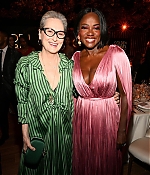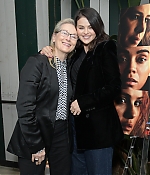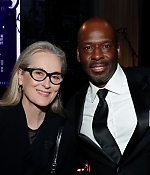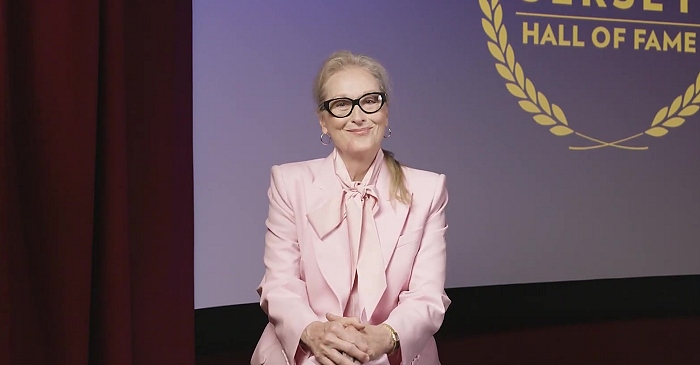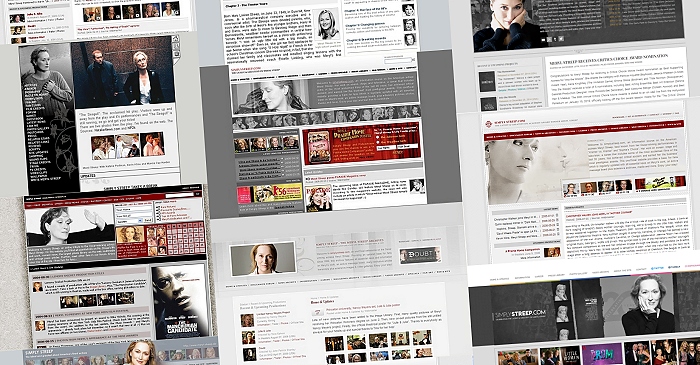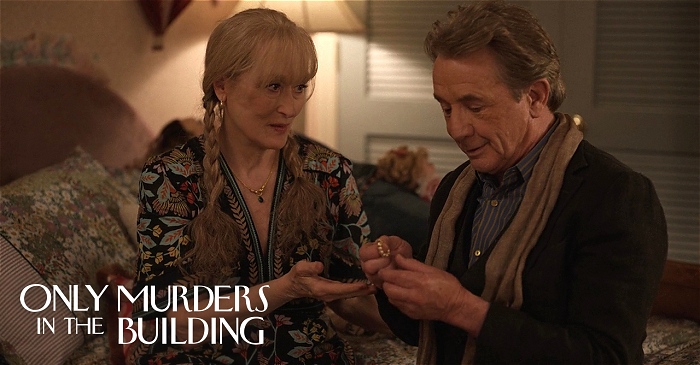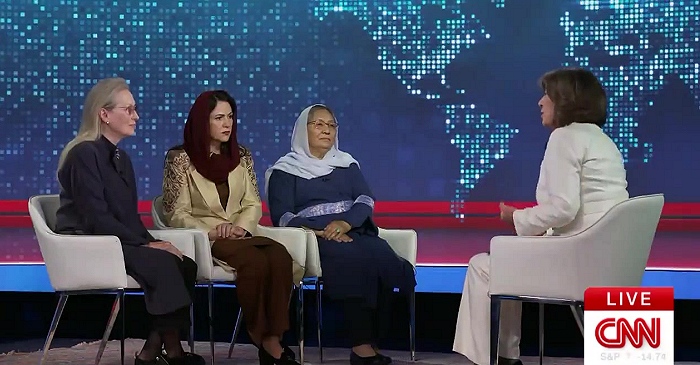
|
Hamilton Was Just the Beginning. Hollywood Loves Broadway, Again
The New York Times ·
November 04, 2020
· Written by Alexis Soloski
|
Theaters may be closed, but streamers and studios are flocking to the stage to meet the insatiable demand for content.
On a sun-nuzzled February morning earlier this year, “The Prom,” Ryan Murphy’s film adaptation of the Tony-nominated musical, prepared for a location shoot in a high school gym on the eastern edge of Hollywood. Basketball hoops kissed the ceiling. Rubber matting and webs of cables carpeted the floor. Beside the snack tables, James Corden, Kerry Washington and Meryl Streep, in a wig the red of a cocktail cherry, practiced a dance number, sashaying through the same steps at not quite the same time. The filmmaking, Corden said, once he had spun his final spin, had been amazing, joyous, nearly as much fun as “Cats,” particularly these song and dance rehearsals. “You feel like you might be in the greatest touring production of all time,” he said. The stage version of “The Prom,” a story of a young woman who wants to take her girlfriend to a school dance and the Broadway stars who debatably come to her aid, has scheduled an actual tour for January, Covid-19 permitting. That’s a little more than a month after Netflix releases Murphy’s film, which tells the same tale with a starrier cast, fancier sets, delirious wigs and an orchestra that includes four French horns, four more than the Broadway pit could afford.
“The Prom” is the latest in a sequined swell of stage-to-stream and stage-to-screen Broadway adaptations. A list of recent releases, coming titles and financed projects includes “Hamilton,” “American Utopia,” “The Boys in the Band,” “What the Constitution Means to Me,” “The Prom,” “Ma Rainey’s Black Bottom,” “Wild Mountain Thyme,” (based on “Outside Mullingar”), “West Side Story,” “In the Heights,” “Diana: The Musical,” “Dear Evan Hansen,” “13” and “Wicked.” “It’s just something in the zeitgeist,” said John Patrick Shanley, who wrote and directed “Wild Mountain Thyme,” which arrives in theaters and on demand Dec. 11. After decades of sporadic adaptations, Hollywood has suddenly thrown a lot of financing — and entire brass sections — at theatermakers. Which means that film’s latest special effect is a millenniums-old art form that’s mostly feet and breath and plywood. Hollywood and Broadway have always had a close relationship, though the power dynamics of that relationship have undergone shifts. In Hollywood’s early decades, hit plays typically became films, with studios securing the rights to shows before the first preview. But sometime in the ’70s, with Broadway a beat behind popular music and culture, the flow reversed, as movies became fodder for plays and musicals. Ronald Zank, a professor of theater at the University of Nebraska at Omaha, has traced this shift. In the 1960s, he found, only 5 percent of new Broadway musicals were based on films. In the 2010s, that number had ballooned to 41 percent, a statistic that includes Tony Award winners like “Once,” “Kinky Boots” and “The Band’s Visit.”
“Musicals from films became a safer economic risk,” he said. Producers bet that a Broadway ticket buyer poised to pay hundreds of dollars might find a familiar brand reassuring. What accounts for this new reversal, a spate of theater-based films that precedes and will probably extend beyond Broadway’s pandemic closure? A spotlight operator could focus on a few factors. There’s the increased popularity of today’s Broadway, which consistently breaks records in ticket sales and attendance. Musicals’ new sound, jukebox-driven and pop-influenced, no longer seems so retrograde. And the rise of streaming services has been accompanied by a seemingly insatiable desire for content, even niche content. Also, there’s now more fraternization across theater, film and television with playwrights populating writers rooms and stage directors making movies. “There has been in the past sort of a snobbiness in the film industry against theater and that’s sort of gone away recently,” said Marielle Heller, the “Beautiful Day in the Neighborhood” filmmaker who directed “What the Constitution Means to Me.” “I feel like people are getting more and more excited about the kind of talent that comes out of theater.” The style of contemporary stage-to-screen adaptation ranges widely, from sophisticated performance capture, in the vein of “What the Constitution Means to Me” (Amazon Prime Video) and “Hamilton” (Disney+), to a more expansive take on a stage production, like “The Boys in the Band” (Netflix), filmed with the same stars from Broadway. It might offer substantial new material, as in “The Prom” (due Dec. 11) or a thoroughgoing reimagining of the show, like Lin-Manuel Miranda’s early work, “In the Heights,” directed by Jon M. Chu and slated for a theatrical release next year.
Conventional wisdom used to hold that you shouldn’t film a show that still had an active theatrical life — on Broadway or on tour — as a film would discourage ticket sales. Because why pay hundreds for a seat when $20 will buy you a movie ticket plus popcorn or a monthly subscription to a streamer and even more popcorn? Dori Berinstein, a producer on both the Broadway and Netflix versions of “The Prom,” remembered how colleagues responded when she brought an earlier show, “Legally Blonde,” to MTV about six months after it had opened on Broadway. “They told us ‘You’re crazy’ or ‘You’ll absolutely cannibalize the Broadway show,’” she recalled. Instead, it galvanized tour sales, creating a hunger for the live event. Because even performance capture can’t entirely reproduce the experience of a live show. And not every performance capture aims to. When Thomas Kail decided to record “Hamilton,” he arranged for the cameras to shoot an ideal view of the performance, one that defied the perspective from the balcony or the mezzanine or even the fifth row orchestra. “We’re giving you a kind of proximity in relationship to the storytellers that is impossible if you are sitting in a seat anywhere in a theater,” he said.
Filming can alter performance dynamics, too. The writer and actress Heidi Schreck partnered with Heller on her show, “What the Constitution Means to Me,” over two days in August 2019. Because the production, a civics lesson as personal exorcism, depends on the relationship between Schreck and the audience, Heller boosted the house lights to record the crowd’s response. “I mean, she warned me. I knew. I thought, ‘I’ve done this show so many times, I’m going to be fine,’” Schreck said. “But I walked out and I saw everyone staring at me. I felt suddenly naked. I just kind of froze.” She stopped the show and took out a contact lens. Then she could continue. A captured performance exists, by default, as the definitive version of the show, the only one that can be played — and replayed and replayed — at home. But it only records one version, or perhaps two or three versions combined in an editing suite. (Navigating theater and film unions makes filming performances difficult.) Even the language — “capture” — suggests an attempt to ensnare something that would otherwise run wilder and freer. “There’s no way to capture a perfect version of it,” Schreck said. And there’s no way, even with cutaways to the audience, to replicate the bodily presence of theater.
Plenty of films don’t want to. When George C. Wolfe began work on “Ma Rainey’s Black Bottom,” an adaptation of the August Wilson play that arrives on Netflix on Dec. 18, he tried to forget that he had ever seen the Broadway production. “I just played a game with myself that let me erase our memory of the stage play,” he said. He and Ruben Santiago-Hudson, the playwright and director who adapted the script for film, cut dialogue, compressed action and pushed the film beyond the play’s single set, staging a blues show in the South, wandering the streets of 1927 Chicago. Ryan Murphy made plans to buy the rights to “The Prom” the same snowy January night he saw it. Like Emma, the musical’s heroine, Murphy went to high school in Indiana. A guidance counselor had discouraged him from taking a boyfriend to the prom. “I made the movie for my younger self,” he said. “who wasn’t allowed to have those things, who wasn’t allowed to have those feelings.” But wanting to make a film of the show didn’t mean that he wanted to re-create the show. “When you’re trying to do a note-by-note version of what’s onstage, that to me is when you’re not really doing your job as a filmmaker,” he said. He recast the show completely, assembling a team that would have international appeal. He commissioned new dialogue and a new song, and he knew that when the script mentioned a monster truck rally he was going to have to find 15 or so real monster trucks to surround Streep. Still, not every translation from one medium to another succeeds, monster trucks or no. Many stage adaptations, plays especially, can seem claustrophobic and shouty when filmed. “Some things are quite, quite dreadful when they make it to the screen,” Zank said. He may have mentioned “Cats.” Shanley blamed the economics of contemporary theater, which favors small cast sizes. “Then when you turn around and try to make that a film, it’s very difficult to organically expand the story,” he said. He remembered panicking while adapting his Tony-winning play, “Doubt,” set in a parochial school. “I’m like, ‘Oh, my God, four people and three of them dressed head to toe in black, and they don’t drive cars or have guns,’” he said. “I sweated over that one.”
Filmed versions of Broadway shows, good or bad, are a more democratic form of entertainment. Issues of access and finance mean that not everyone can make it to Broadway or to any form of professional theater. And until Broadway reopens, in June at the earliest, screen versions are all we have.
“Diana: The Musical,” a stage biography of the Princess of Wales, would have opened on Broadway in March 2020. Instead a filmed version will appear on Netflix sometime next year. Christopher Ashley, the director, said he felt thankful to be working at a time when so many in theater remain unemployed. Still it felt strange to commit the musical to film before it had properly finished previews. “We are building the car as we drive it,” he said. “It all feels new and surreal.” Will it feel new a few years from now? After all, one moment’s zeitgeist is another’s old hat, even if that hat is spangled. Scott Stuber, the head of Netflix’s original film division, predicted that Netflix might linger at the stage door for a while, in search of intellectual property, or IP. “We’re a very new film company,” he said. “So for us, we have no IP, we have no library. We can’t remake old movies. We don’t have Marvel. Originality is our IP.” Remaking musicals felt original, he said, and it was that something that Netflix would continue to invest in. Then again, there are various ways of investing in theater. Amanda Greenblatt, a senior development executive at Amazon, was eager to acquire “What the Constitution Means to Me.” “We basically just shouted our passion for this one from the rooftops,” she said. But the studio doesn’t plan on buying more plays. Instead it wants to work with current and former playwrights — Greenblatt mentioned Matthew Lopez (“The Inheritance”) and Phoebe Waller-Bridge (“Fleabag”) — to make television. “It’s about going beyond just a single production and really lifting them up as creators generally,” she said. In this moment — and until theaters can safely reopen — these screen adaptations do seem like gifts, gifts that may keep on giving. Kail bet that these films would, eventually, cultivate new theatergoers. “It’s going to create a desire to go and experience it live, when it’s safe to go back and see things live,” he said.
On a blustery evening in October, on the closing night of the Woodstock Film Festival, Schreck arrived for the socially distanced premiere of her film at the Greenville Drive-in in upstate New York. “I never imagined coming to my play at a drive-in,” she said. “It’s kind of thrilling. I mean, this is all horrible” — “this” being the pandemic — “but I feel like we’re finding other ways to commune and be creative and connect.”
The film began. An hour and 40 minutes later, as the credits rolled, the filmgoers, in their cars, flicked hazard lights and flashed headlights and honked horns — a kind of applause.


